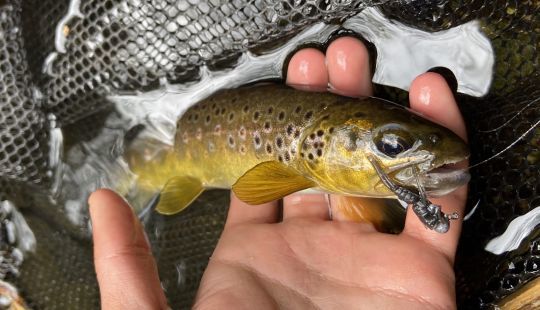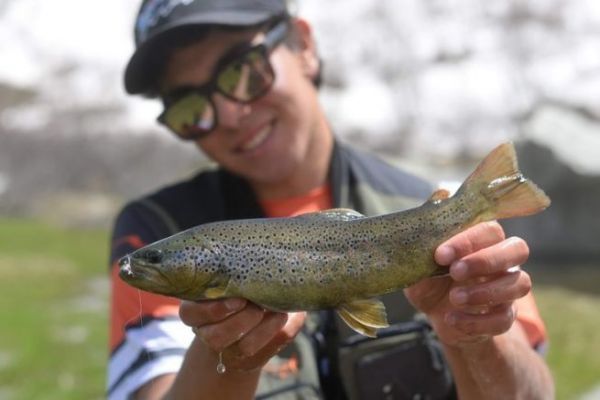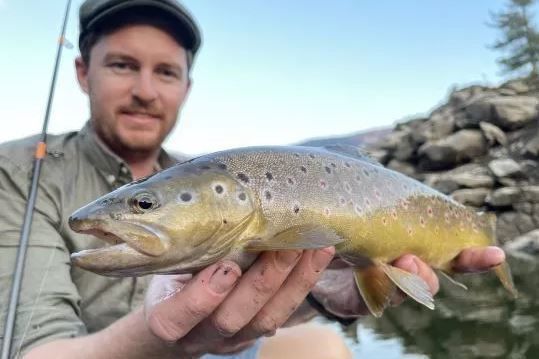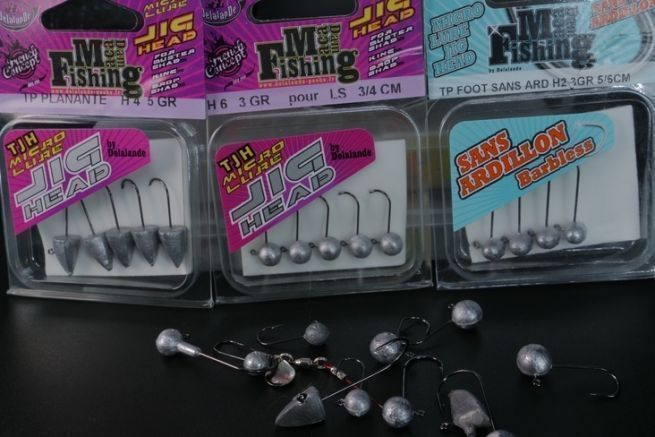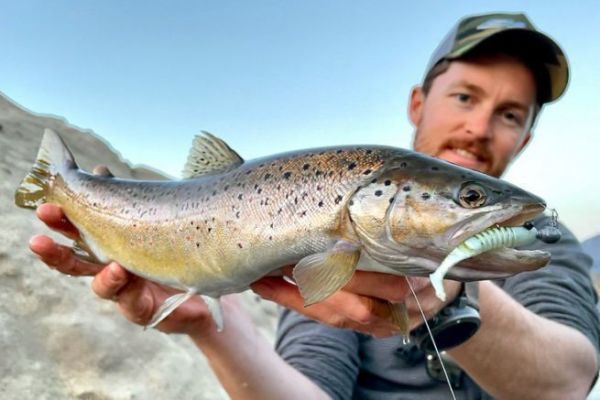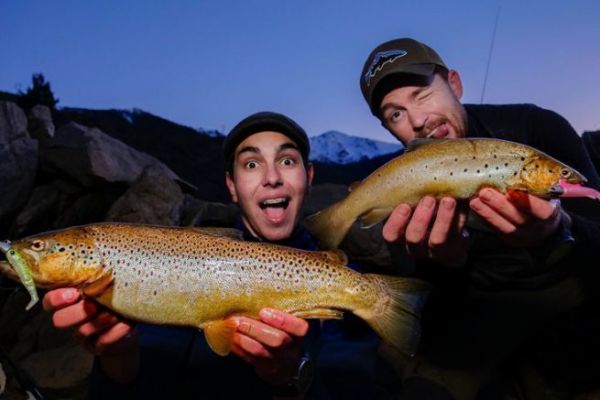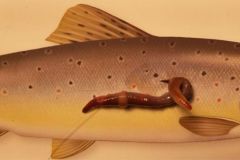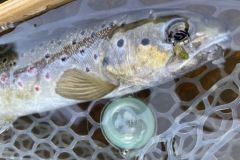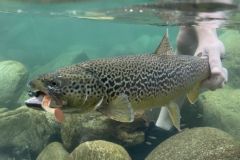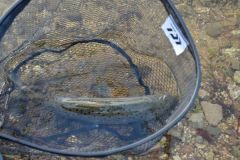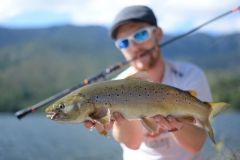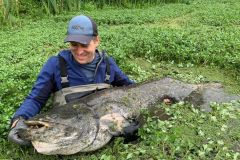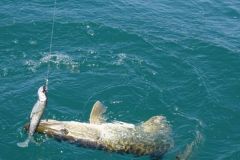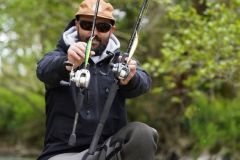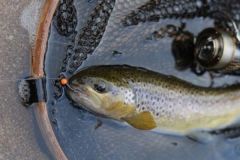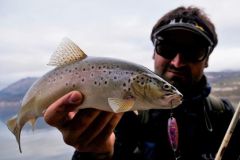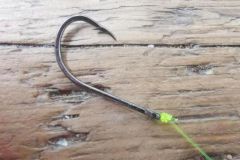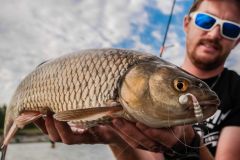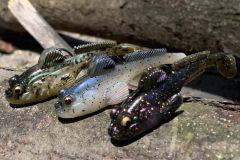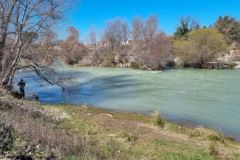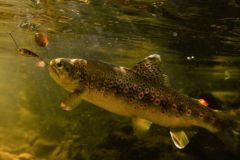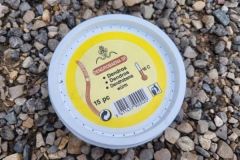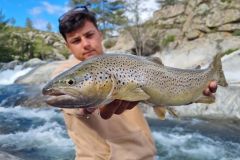Shad type soft lures for trout fishing
The most common type of lure used for trout stalking is without a doubt the shad! This fish shaped lure can be categorized as such when it has a paddle at the end of its tail.
The paddle, which is perpendicular to the lure, can be round, square or oval in shape and holds the water when the lure descends and recovers, thus emitting vibrations of varying size. It is also this paddle which is at the origin of the undulation of the lure and thus of its swimming!
There are a multitude of shads on the market, with different softness of rubber, different paddle sizes, and different body shapes. All these characteristics influence the swimming and vibration of the different models, but all of them are still Shads.
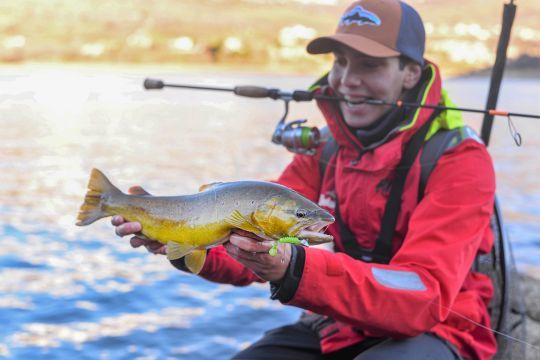
Finess for trout fishing
Finess lures are, unlike shads, soft lures that do not have a paddle. They generally have a long and thin shape, hence their name. Their purpose is to imitate a small fish. Their tail ends either in a V shape with a small sail to be slightly held back during the animations, or in a conical shape to end up very thin, like the tail of a mouse.
These lures are formidable for trout, as they are much less used than shads. And even if their swim is less attractive to the human eye, it is the one that is closest to the natural swim of a fish, with very little movement, a slight displacement of water and only a few small vibrations.
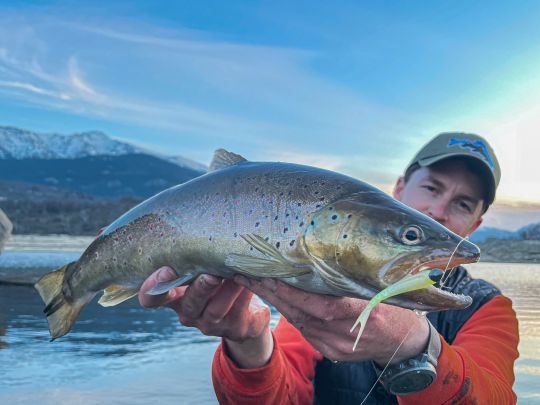
And why not at the grub?
Grubs, these small soft lures with a sickle-shaped tail, have the particularity to swim at the slightest solicitation, regardless of the retrieve speed! Grubs were the first type of soft lure to arrive on the market, with the famous Twist, and more recently, more than 30 years ago, the Sandra from the French firm Delalande.
Although they are widely used on perch and pike, grubs are less used on trout. However, they are very attractive, hold the current perfectly, and are very easy to use, even for beginners! These lures are designed to imitate a fish, and are a type of lure in their own right, with vibrations and an enchanting swimming action very different from other soft lures.
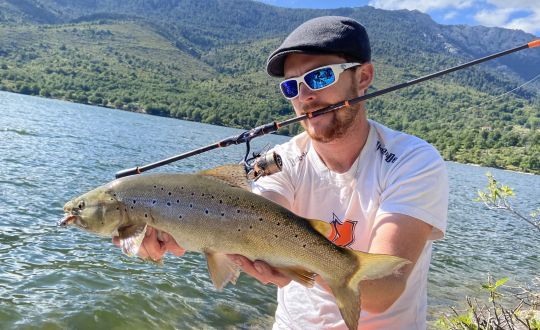
Insect lures
Finally, the last type of lure essential for trout fishing is the insect! Contrary to the 3 other types of lures mentioned above, their purpose is not to imitate a fish, but rather an insect, a larva or any other small invertebrate that trout love!
This type of lure is essential in some sessions or some spots where trout focus on insects and literally shun fish imitations! Several uses are possible with this type of lure, from a simple leaded head to a leadless lure to stay on the surface/sub-surface and imitate a hatch!
